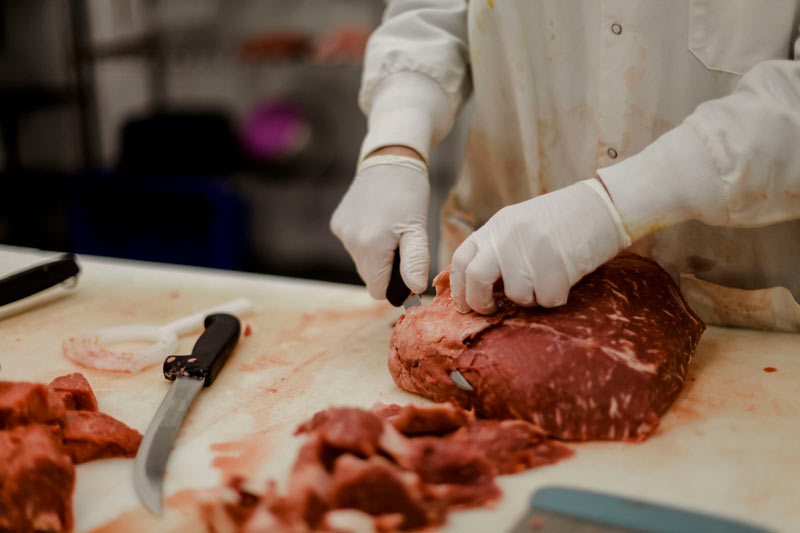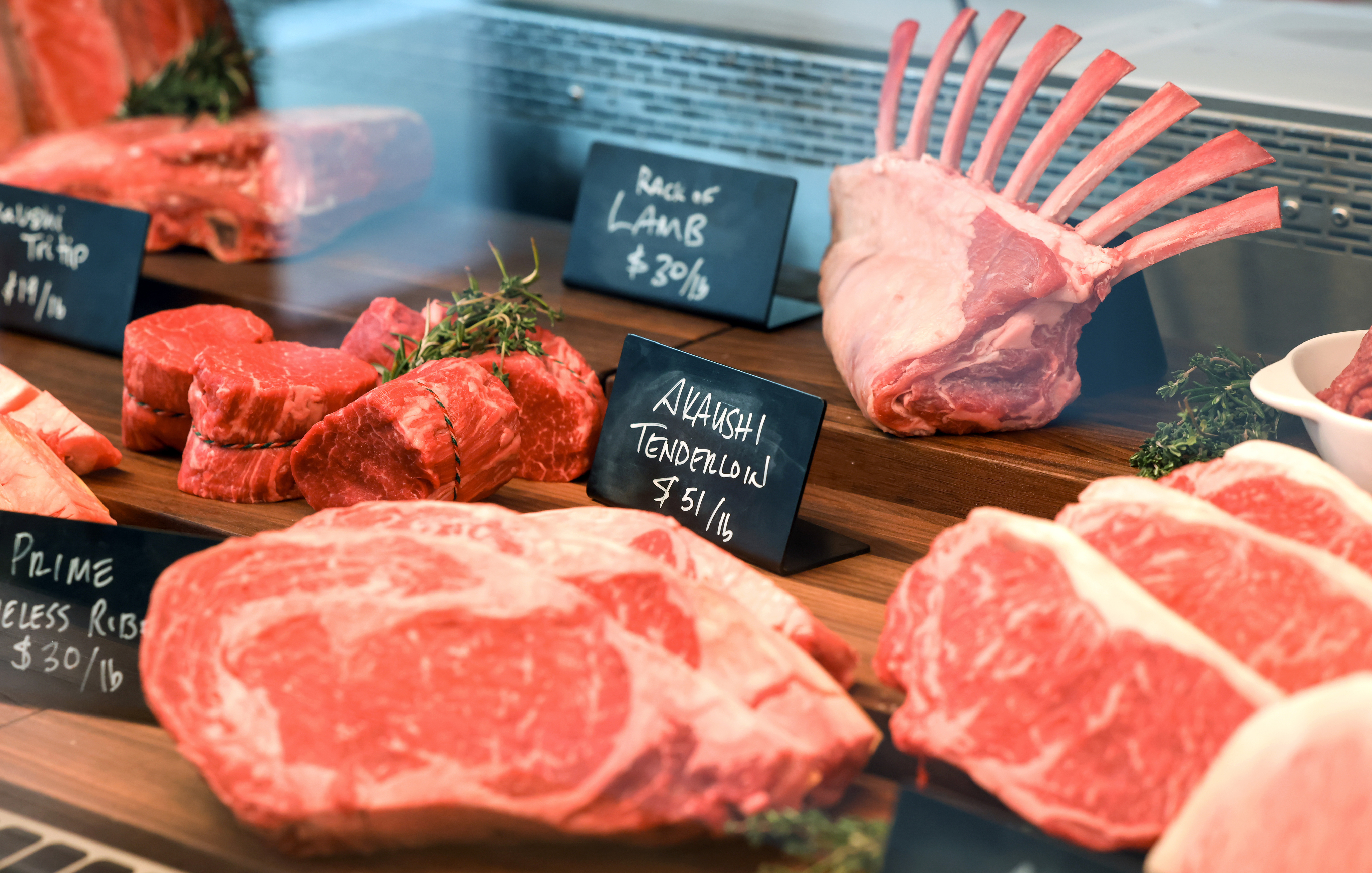Discover fresh, local meats at Bagley Meat Market Edwardsville IL in Edwardsville.
Discover fresh, local meats at Bagley Meat Market Edwardsville IL in Edwardsville.
Blog Article
Exactly How to Select the Perfect Cut of Meat From a Trusted Meat Market
Selecting the suitable cut of meat from a relied on meat market requires a thoughtful method that balances quality, culinary purpose, and budget plan. Understanding the various kinds of meat and their respective cuts is important, as is involving with your butcher to gain understandings right into sourcing and preparation. Observing qualities such as color, texture, and marbling can additionally lead your choice. As you take into consideration these aspects, it becomes clear that the subtleties of your choice could dramatically influence the result of your dish, triggering a much deeper expedition of the criteria that truly matter.
Recognizing Meat Cuts


For circumstances, the tenderloin is prized for its buttery structure and minimal connective tissue, making it excellent for fast cooking approaches such as cooking or pan-searing. On the other hand, tougher cuts like the brisket or shank advantage from sluggish food preparation strategies to damage down collagen, generating rich and tasty outcomes.
Furthermore, the fat content of a cut plays a vital role in taste profile and dampness retention during food preparation. Cuts with greater fat content, such as ribeye, use an even more durable flavor, while leaner choices, like sirloin, may need careful preparation to prevent dry skin (bagley meat market edwardsville il). Recognizing these subtleties enables informed selections that raise culinary creations, making sure that each dish showcases the finest qualities of the picked meat
Variables to Consider
When choosing the ideal cut of meat, numerous critical elements enter into play that can significantly affect the final dish. Most importantly, think about the kind of meat you desire-- beef, pork, lamb, or chicken-- as each offers unique tastes and appearances. The specific cut within that category is similarly important; for circumstances, ribeye supplies rich marbling, while tenderloin gives a lean, buttery structure.
One more factor is the food preparation method you plan to use. Cuts appropriate for barbecuing, such as T-bones or sirloins, differ from those much better fit for slow-moving food preparation, like chuck roasts or shanks. Furthermore, freshness is paramount; always pick meat with a dynamic color and company texture, indicating top quality and appropriate handling.
Costs cuts may supply exceptional preference, yet there are additionally cost-efficient alternatives that, when prepared appropriately, can produce delicious outcomes. Stabilizing these factors will certainly assist you select the best cut for your culinary needs.
Questions to Ask Your Butcher
A butcher's competence can be important when picking the perfect cut of meat for your culinary undertakings (bagley meat market edwardsville il). To maximize this source, consider asking detailed questions that official source can direct your selections. Begin by inquiring about the resource of the meat. Understanding where it originates from can give insights right into its high quality and flavor account.
Next, inquire about the various cuts offered for the sort of meat you choose. An experienced butcher will explain the subtleties of each cut, helping you choose one that matches your food preparation technique and desired end result. Do not hesitate to ask about the most effective cooking methods for a certain cut; butchers commonly have suggestions that can improve your recipe.
It's likewise sensible to ask regarding the meat's quality. An excellent butcher will be eager to share their proficiency and suggest cuts that will certainly delight your taste. Engaging your butcher with these concerns can substantially improve your meat selection experience.
Identifying Top Quality Meat

Texture is one more essential variable; top quality meat ought to really feel solid and a little springy to the touch. Avoid any kind of cuts that feel slimy or excessively completely dry, as these can show spoilage or improper storage. Additionally, odor plays an important duty; fresh meat Bonuses ought to have a clean, neutral fragrance, while any kind of repulsive or sour odors are warnings.
Lastly, take into consideration the source. Purchasing from a respectable meat market, where the meat's beginning is understood, can make certain higher top quality requirements. By focusing on these indications-- shade, marbling, texture, smell, and source-- you can with confidence pick cuts that will boost your cooking and dining experience.
Food Preparation Approaches for Each Cut
Selecting the ideal cooking technique is extremely important for making best use of the taste and tenderness of each cut of meat. Various cuts have special attributes that dictate the most ideal cooking methods.
For tender cuts, such as filet mignon or ribeye, completely dry warmth techniques like grilling, broiling, or pan-searing are optimal. Alternatively, harder cuts, such as chuck or brisket, benefit from moist heat methods, consisting of braising or slow-moving cooking.
Pork chops and poultry breasts are versatile and can be prepared making use of both completely dry and wet approaches. While barbecuing or roasting can produce scrumptious results, poaching or sautéing can preserve wetness and tenderness. For lamb, techniques like toasting or braising are recommended, as they complement the meat's robust flavor.

Conclusion
To conclude, picking the suitable cut of meat from a respectable meat market demands a thorough understanding of meat cuts and consideration of different aspects, consisting of resource, quality, and cooking methods. Engaging with the butcher with targeted questions can produce important insights and recommendations tailored to particular why not try these out cooking needs. Prioritizing both top quality and spending plan will improve the total gastronomic experience, ensuring that the chosen cut fulfills assumptions in both taste and preparation.
Report this page